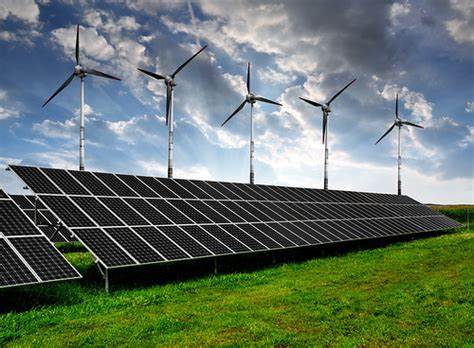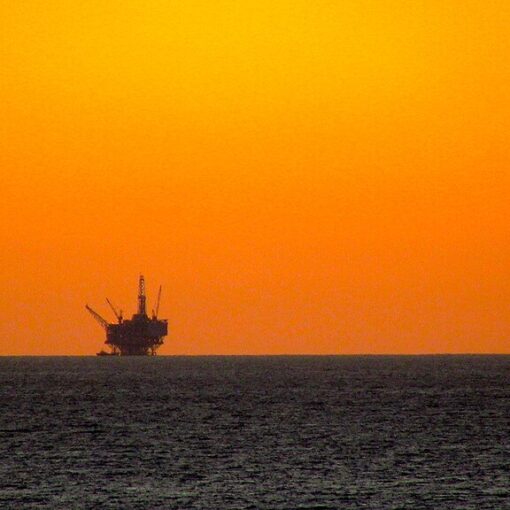By Romany Webb
 There has been much talk in recent weeks about the regulation of methane emissions from oil and gas operations. Environmentalists and others have come out in force against the Trump Administration’s rollback of Obama-era methane regulations, arguing that retention of the regulations is vital to ensure oil and gas operations are conducted safely and with minimal environmental impacts. Despite this, however, both the Environmental Protection Agency (“EPA”) and Bureau of Land Management have recently announced plans to reconsider existing regulations. Both agencies have sought to delay implementation of the regulations pending reconsideration, but are facing court challenges from states and green groups. One of those challenges has already been upheld, with the U.S. Court of Appeals for the District of Columbia Circuit ruling that EPA cannot implement a three-month stay of its regulations targeting new oil and gas facilities. (The Court subsequently allowed EPA to delay its regulations for 14 days while it considers whether to appeal the ruling.)
There has been much talk in recent weeks about the regulation of methane emissions from oil and gas operations. Environmentalists and others have come out in force against the Trump Administration’s rollback of Obama-era methane regulations, arguing that retention of the regulations is vital to ensure oil and gas operations are conducted safely and with minimal environmental impacts. Despite this, however, both the Environmental Protection Agency (“EPA”) and Bureau of Land Management have recently announced plans to reconsider existing regulations. Both agencies have sought to delay implementation of the regulations pending reconsideration, but are facing court challenges from states and green groups. One of those challenges has already been upheld, with the U.S. Court of Appeals for the District of Columbia Circuit ruling that EPA cannot implement a three-month stay of its regulations targeting new oil and gas facilities. (The Court subsequently allowed EPA to delay its regulations for 14 days while it considers whether to appeal the ruling.)
Challenging the Trump Administration’s deregulatory agenda is vital to prevent any backward movement on methane regulation. However, to effectively address methane emissions, advocates must also push for further regulation, particularly at the state level. State regulators can, for example, play an important role in controlling methane emissions from the gas transportation system. That system, which consists of the network of pipes used to move gas from production sites to customer premises, currently accounts for roughly 7 percent of national methane emissions. Most of these emissions are due to the leakage of gas, which is comprised principally of methane, from damaged and/or aging pipelines. (More information on the cause of leaks is provided in my previous post here.) This not only results in the waste of a valuable resource, but also poses a serious threat to public safety and the environment.
Gas pipeline leaks have been blamed for recent deadly explosions in New York (2014), California (2010), Pennsylvania (2008), and New Jersey (2005). Leaks can also have devastating consequences for the environment, leading to air pollution problems and accelerating climate change. Despite this, however, many leaks remain unrepaired for long periods. This is partly due to the sheer number of leaks – research suggests that, in some areas, one leak occurs every quarter mile – which makes instituting a comprehensive repair program costly. With the recent decline in gas prices, operators may be reluctant to voluntarily invest in leak repair, making regulation essential.
Existing Regulation of Gas Pipeline Leaks
Regulatory authority over gas pipeline leaks is shared between the federal government and the states. At the federal level the Pipeline and Hazardous Materials Safety Administration (“PHMSA”) has adopted regulations establishing minimum leak repair requirements for all pipelines. Additional requirements have also been adopted by some states. (Note however, that the state rules only apply to pipelines located entirely within the boundaries of the relevant state (intrastate pipelines), with other (interstate) pipelines subject to solely the federal regulations.)
Current PHMSA regulations require pipeline operators to ensure the prompt repair of leaks posing a hazard to persons or property but allow other (non-hazardous) leaks to be left unrepaired. In deciding whether a leak is hazardous, operators generally focus on its proximity to buildings, rather than its size. Leaks in isolated areas can be classified as non-hazardous, and left unrepaired, even if they release substantial gas.
Building on the federal regulations, some states have adopted their own, more stringent leak repair requirements. According to a 2015 study, 15 states have rules specifying mandatory timeframes (ranging from 1 to 15 months) for the repair of leaks that are non-hazardous at the time of detection, but are likely to become hazardous in the future. Notably however, just six states have mandatory timeframes for the repair of other leaks, which will remain non-hazardous.
| State | Maximum time for repair of non-hazardous leaks |
| Arizona | 12 months (for underground leaks from transmission pipelines only) |
| Florida | 90 days (for above-ground leaks only) |
| Kansas | 30 months |
| Maine | 24 months |
| Missouri | 60 months |
| Texas | 36 months |
In most states, then, pipeline operators are under no obligation to repair non-hazardous leaks. Thus, even very large leaks may be left unrepaired, provided they are in isolated areas. That must change if we are to reduce methane emissions from gas transportation. At a minimum, every state should establish mandatory timeframes for the repair of all leaks, and consider other reforms to incentivize prompt leak repair.
Incentives for Leak Repair
Pipeline operators currently have little incentive to repair leaks as the cost of leaked gas can be passed through to ratepayers. The rates charged by interstate and intrastate pipeline operators are set by federal and state agencies respectively. At both the federal and state levels, rates are set to enable pipeline operators to recover their costs of service. In West Ohio Gas Co. v. Public Utilities Commission, 294 U.S. 63 (1935), the U.S. Supreme Court held that pipeline rates must include an allowance for “gas lost as a result of leakage, condensation, expansion, or contraction” because “a certain loss through these causes is unavoidable.” Consistent with that decision, all jurisdictions allow pipeline operators to recover the cost of so-called “lost and unaccounted-for gas” (“LAUG”), measured as the difference between gas flows into and out of the pipeline system.
In most states, pipeline operators are required to track changes in the amount of LAUG and identify any past under- or over-recoveries, compared to actual losses. If under-recovery has occurred, the operator may recover the difference from ratepayers, for example through a surcharge. Conversely, if there has been an over-recovery, ratepayers must be provided with a refund. As a result, ratepayers bear the risk of any increase, and enjoy the benefit of any reduction, in gas losses. This leaves pipeline operators unaffected by such changes, giving them little incentive to reduce losses by repairing leaks.
Some states have recently sought to address this problem by changing the way pipeline operators recover the cost of LAUG. Here in New York, for example, LAUG is recovered through a so-called “fixed factor of adjustment.” This factor is set, based on historic gas losses, every 3 years. During that period, actual losses do not have to be tracked, and there is no end-of-period reconciliation. Thus, if gas losses during the period are below historic levels, the operator may keep the difference. Recent studies suggest that this “reward” for operators has led to reduced gas losses.
Other states have sought to incentivize loss reduction by capping cost recovery for LAUG. By way of example, in 2014, Connecticut enacted legislation capping recovery for LAUG at 3 percent of pipeline throughput (unless special circumstances exist). Under the legislation, the cost of gas losses in excess of the cap cannot be passed onto ratepayers, and must be borne by the pipeline operator. The hope is that operators will take steps to reduce gas losses below the cap to avoid these costs. While it is still too early to say whether that is happening in Connecticut, there is some evidence that caps may have led to reduced gas losses in other states.
Despite these success stories, reforms are yet to be adopted in most states, with pipeline operators still allowed to recover the full cost of LAUG, generally through a tracking mechanism, which gives them no incentive to reduce losses. This, together with the lax regulatory regime described above, means operators are unlikely to aggressively find and fix pipeline leaks. Changing that should be a priority for everyone concerned about methane emissions and associated climate change.
Romany Webb is a Research Scholar at Columbia Law School, Adjunct Associate Professor of Climate at Columbia Climate School, and Deputy Director of the Sabin Center for Climate Change Law.





